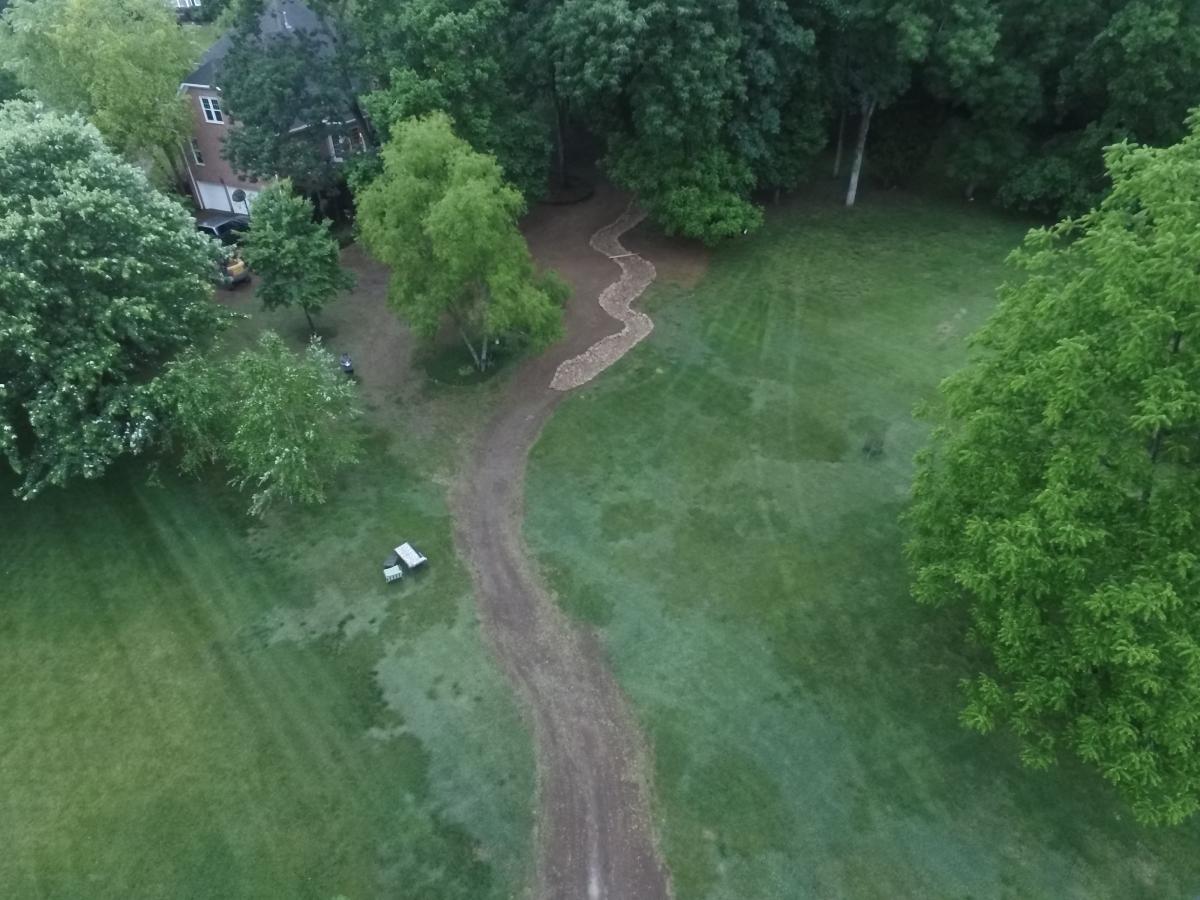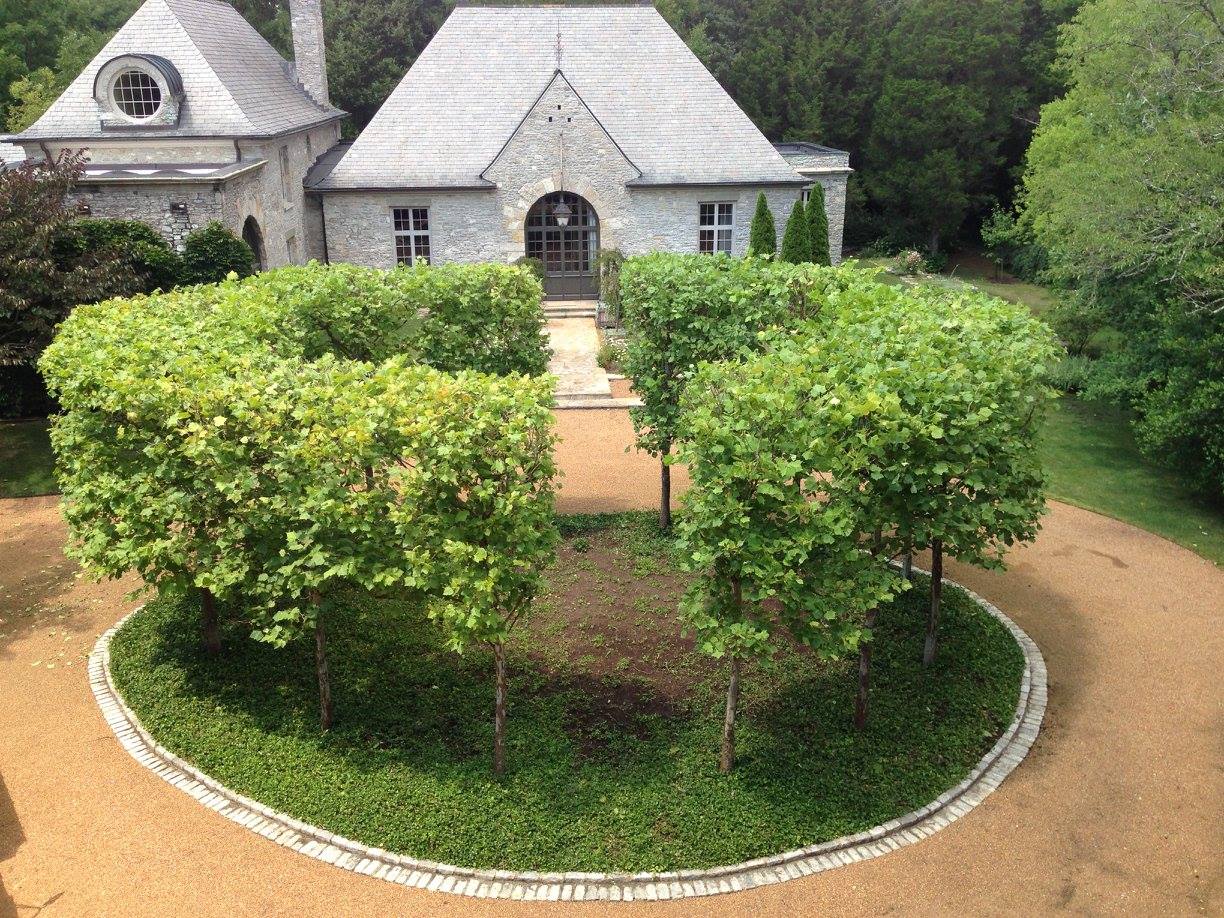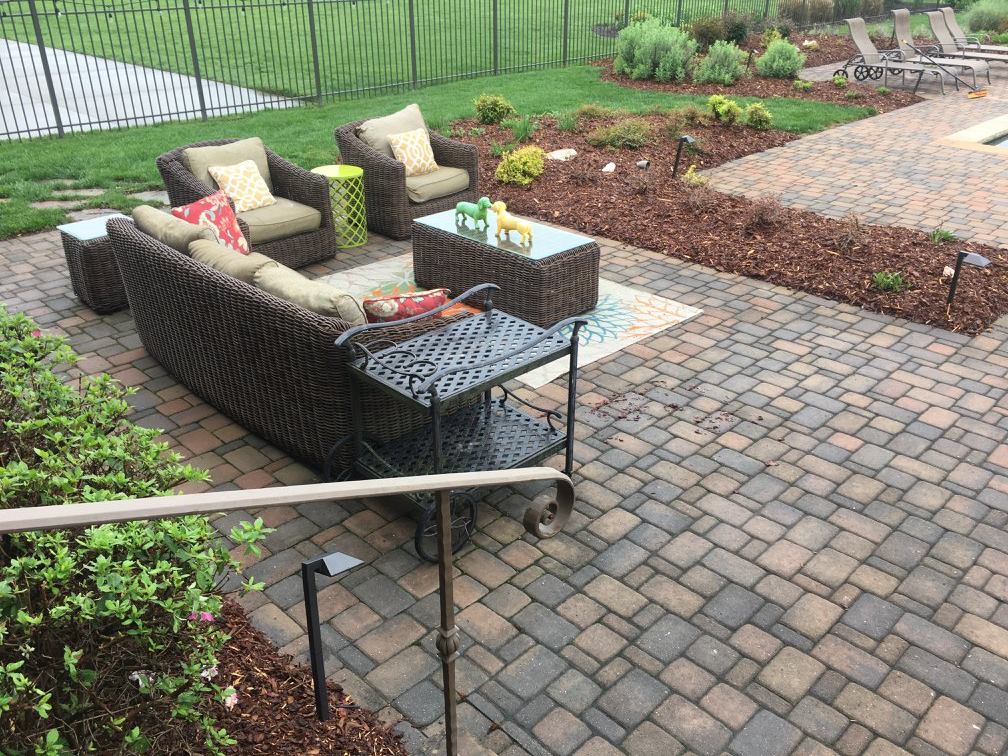Water problems around your home can quickly escalate from minor nuisances to major structural threats, causing foundation damage, basement flooding, and landscape erosion that cost thousands in repairs. French drain installation provides one of the most effective solutions for managing water flow and protecting your property investment from moisture-related damage.
Understanding French drain installation costs is crucial for budgeting this important home improvement project. French drain costs typically range from $15-50 per linear foot for basic exterior systems to $100+ per linear foot for complex interior basement installations, with total project costs spanning $1,500 for simple yard drainage to $15,000+ for comprehensive waterproofing systems.
This comprehensive guide breaks down everything you need to know about French drain installation costs in 2025, helping you understand system types, pricing factors, and how to choose the right drainage solution that protects your property while providing excellent long-term value. Our professional drainage and erosion control services provide expert installation and cost-effective solutions for all drainage needs.
Understanding French Drain Systems and Applications
What is a French Drain?
A French drain is a gravel-filled trench containing a perforated pipe that redirects surface water and groundwater away from problem areas. Despite its name, the French drain was invented by Henry French, an American farmer, in the 1850s and has become the gold standard for residential drainage solutions.
Key Components:
- Perforated drainage pipe: Collects and channels water flow
- Gravel bed: Filters water and provides structural support
- Geotextile fabric: Prevents soil migration and clogging
- Proper slope: Ensures gravity-driven water flow to outlet
How French Drains Work:
- Water collection: Perforated pipe collects water from surrounding soil
- Gravity flow: Proper slope moves water toward designated outlet
- Filtration: Gravel and fabric filter out sediment and debris
- Redirection: Water exits safely away from protected areas
Types of French Drain Systems
Exterior/Yard French Drains ($15-35 per linear foot):
- Surface drainage: Manages pooling water and runoff
- Landscape protection: Prevents erosion and soggy areas
- Foundation protection: Diverts water away from house
- Typical applications: Wet spots, slopes, around patios
Learn more about comprehensive drainage options in our complete drainage systems guide.
Interior/Basement French Drains ($50-100+ per linear foot):
- Foundation waterproofing: Interior perimeter drainage systems
- Sump pump integration: Connects to pump systems for water removal
- Basement protection: Prevents water infiltration and flooding
- Typical applications: Basement waterproofing, crawl spaces
Curtain Drains ($20-40 per linear foot):
- Hillside protection: Intercepts groundwater flow
- Large area coverage: Protects entire property sections
- Slope stabilization: Prevents erosion and landslides
- Typical applications: Hillside properties, large water flow areas
French Drain Installation Cost Factors
Excavation and Labor Costs ($10-40 per linear foot)
Excavation represents the largest cost component for most French drain projects:
Basic Hand Excavation ($10-20 per linear foot):
- Shallow trenches: 1-2 feet deep for surface drainage
- Accessible areas: Easy access for manual digging
- Small projects: Under 100 linear feet of drainage
- Standard soil conditions: Normal soil without rocks or roots
Machine Excavation ($15-30 per linear foot):
- Deeper trenches: 2-4 feet deep for comprehensive drainage
- Large projects: Over 100 linear feet requiring efficiency
- Equipment access: Areas accessible to small excavators
- Faster completion: Mechanical excavation speeds installation
Complex Excavation ($25-40 per linear foot):
- Difficult conditions: Rocky soil, tree roots, or utilities
- Deep installations: 4+ feet deep for foundation systems
- Limited access: Areas requiring hand digging or special equipment
- Site restoration: Extensive cleanup and landscape restoration
For proper site preparation and grading, our professional yard grading services ensure optimal drainage performance.
Material Costs ($5-15 per linear foot)
Basic Material Package ($5-8 per linear foot):
- 4-inch perforated pipe: Standard corrugated plastic drainage pipe
- Gravel: Basic drainage gravel or crushed stone
- Filter fabric: Geotextile fabric to prevent clogging
- Fittings: Basic elbows, tees, and connections
Premium Material Package ($8-15 per linear foot):
- 6-inch solid core pipe: Smooth interior for better flow
- Premium gravel: Graded stone for optimal drainage
- Professional fabric: Heavy-duty geotextile material
- Quality fittings: Durable connections and specialty components
System Complexity and Features
Basic Drainage ($15-25 per linear foot):
- Simple linear runs: Straight drainage lines with minimal fittings
- Single outlet: Direct path to one exit point
- Standard depth: 18-24 inch typical installation depth
- Basic restoration: Simple backfill and surface repair
Complex Systems ($30-50+ per linear foot):
- Multiple branches: Connected systems with various collection points
- Multiple outlets: Various exit points for comprehensive coverage
- Deep installations: 3-4+ feet deep for maximum effectiveness
- Integration features: Connections to downspouts, catch basins, sump pumps
French Drain Costs by Application Type
Yard and Landscape Drainage ($1,500-8,000)
Exterior drainage systems for surface water management:
Basic Yard Drainage ($1,500-3,500):
- Project scope: 50-150 linear feet of drainage
- Typical applications: Wet spots, around patios, simple slopes
- Installation depth: 18-24 inches deep
- Materials: Standard pipe, gravel, and fabric
- Cost breakdown: $20-25 per linear foot installed
Comprehensive Landscape Drainage ($3,500-8,000):
- Project scope: 150-400 linear feet with multiple branches
- Typical applications: Large property areas, multiple problem zones
- Installation depth: 2-3 feet deep for maximum effectiveness
- Materials: Premium components and professional installation
- Cost breakdown: $25-35 per linear foot installed
Common Yard Drainage Projects:
- Patio drainage: $800-2,000 (typically 40-80 linear feet)
- Driveway drainage: $1,200-3,000 (typically 60-120 linear feet)
- Slope stabilization: $2,000-6,000 (typically 100-300 linear feet)
- Garden bed drainage: $600-1,500 (typically 25-75 linear feet)
Foundation and Basement Drainage ($3,000-15,000+)
Interior and exterior foundation systems for serious water problems:
Exterior Foundation Drainage ($3,000-8,000):
- Project scope: Foundation perimeter drainage installation
- Excavation requirements: 4-6 feet deep around foundation
- Waterproofing integration: Often combined with foundation sealing
- Restoration needs: Significant landscape and hardscape restoration
- Cost breakdown: $25-40 per linear foot of foundation
Interior Basement Drainage ($5,000-15,000+):
- Project scope: Interior perimeter drainage with sump pump
- Installation complexity: Breaking concrete, extensive excavation
- System integration: Sump pump, battery backup, discharge lines
- Basement finishing: Floor restoration and waterproofing
- Cost breakdown: $50-100+ per linear foot of basement perimeter
Typical Foundation Projects:
- Partial foundation drainage: $3,000-6,000 (one or two sides)
- Complete exterior system: $6,000-12,000 (full perimeter)
- Interior basement system: $8,000-15,000 (full interior perimeter)
- Crawl space drainage: $2,500-6,000 (depends on access and size)
Specialty Drainage Applications ($2,000-10,000+)
Curtain/Interceptor Drains ($2,000-8,000):
- Hillside water interception: Large-scale groundwater management
- Property protection: Prevents water from reaching structures
- Extensive excavation: Often requires heavy equipment
- Professional design: Engineering may be required for complex sites
Agricultural/Large Property Drainage ($5,000-20,000+):
- Field drainage: Large-scale agricultural applications
- Acreage protection: Comprehensive property-wide systems
- Commercial installation: Heavy equipment and specialized techniques
- Long-term management: Systems designed for decades of performance
Regional Cost Variations
High-Cost Metropolitan Areas
Major cities like New York, San Francisco, Boston, Washington D.C.:
- Labor premiums: 40-70% above national averages
- Permit requirements: Extensive permitting and inspection processes
- Material transport: Higher costs due to logistics and storage
- Typical premium: +50-80% above national averages
Metropolitan Cost Examples:
- Basic yard drainage: $25-40 per linear foot
- Foundation systems: $40-80 per linear foot
- Interior basement systems: $80-150+ per linear foot
Moderate-Cost Regional Markets
Mid-size cities like Atlanta, Phoenix, Denver, Austin:
- Standard labor rates: Close to national averages
- Reasonable permitting: Standard requirements without excessive costs
- Good contractor availability: Competitive market with quality options
- Typical range: National average ±15%
Regional Cost Examples:
- Basic yard drainage: $18-28 per linear foot
- Foundation systems: $30-50 per linear foot
- Interior basement systems: $60-100 per linear foot
Lower-Cost Rural Areas
Smaller towns and rural regions:
- Lower labor costs: 25-40% below national averages
- Simplified permitting: Fewer requirements and lower fees
- Equipment availability: May have limited access to specialized equipment
- Typical savings: 20-35% below national averages
Rural Cost Examples:
- Basic yard drainage: $12-20 per linear foot
- Foundation systems: $20-35 per linear foot
- Interior basement systems: $40-75 per linear foot
Installation Process and Timeline
Typical Installation Steps
Day 1-2: Planning and Excavation:
- Site marking: Utility location and drainage path layout
- Excavation: Trenching to proper depth and slope
- Soil disposal: Removal of excavated material
- Inspection: Verification of proper slope and depth
Day 2-3: System Installation:
- Fabric installation: Geotextile fabric placement
- Pipe installation: Perforated drainage pipe with proper connections
- Gravel placement: Drainage stone installation and compaction
- System testing: Water flow verification and outlet testing
Day 3-4: Restoration and Finishing:
- Backfilling: Soil replacement and compaction
- Surface restoration: Lawn, landscape, or hardscape repair
- Cleanup: Site cleanup and debris removal
- Final inspection: System verification and homeowner walkthrough
Project Timeline Factors
Simple Yard Drainage (1-3 days):
- 50-100 linear feet: Straightforward installation
- Hand excavation possible: Accessible areas with normal soil
- Minimal restoration: Basic surface repair and cleanup
Complex Foundation Systems (3-7 days):
- Extensive excavation: Deep digging around foundations
- Utility considerations: Careful work around existing systems
- Restoration requirements: Significant landscape and hardscape repair
Interior Basement Systems (5-10+ days):
- Concrete removal: Breaking and removing basement floors
- System installation: Complex plumbing and drainage connections
- Floor restoration: New concrete and waterproofing applications
DIY vs. Professional Installation
DIY French Drain Costs
Materials-only costs for self-installation:
Basic DIY Cost Breakdown ($8-15 per linear foot):
- Drainage pipe: $3-6 per linear foot (4-inch perforated)
- Gravel: $2-4 per linear foot (drainage stone)
- Fabric: $1-2 per linear foot (geotextile material)
- Tools and equipment: $200-500 (rental costs)
DIY Limitations and Challenges:
- Physical demands: Extensive manual excavation required
- Proper slope calculation: Critical for system effectiveness
- Utility safety: Risk of damaging underground utilities
- Long-term performance: Installation quality affects system life
Professional Installation Benefits
Expertise and Quality:
- Proper design: Engineering ensures optimal performance
- Correct installation: Professional techniques and quality control
- Utility safety: Experience working around existing systems
- Warranty protection: Guarantees on materials and workmanship
Equipment and Efficiency:
- Professional tools: Excavators, laser levels, compaction equipment
- Faster completion: Experienced crews complete work efficiently
- Site restoration: Professional landscape and hardscape repair
- System integration: Proper connections to existing drainage
When DIY Makes Sense
Good candidates for DIY installation:
- Simple surface drainage: Shallow systems under 50 linear feet
- Easy access areas: No obstacles or utility concerns
- Experienced DIYers: Previous excavation or plumbing experience
- Flexible timeline: No pressure for quick completion
When Professional Installation is Essential
Professional installation recommended for:
- Foundation systems: Any drainage affecting building foundations
- Deep excavations: Systems over 3 feet deep
- Complex layouts: Multiple branches or difficult routing
- Utility integration: Connections to existing systems
- Permit requirements: Projects requiring inspections
Maximizing Your French Drain Investment
Design Considerations for Long-Term Success
Proper Slope Planning:
- Minimum slope: 1% grade (1 inch per 100 feet) for gravity flow
- Optimal slope: 2-3% grade for best performance
- Outlet planning: Adequate discharge location away from structures
- Flow capacity: Sizing system for maximum expected water volume
Quality Material Selection:
- Pipe quality: Solid core pipes perform better than corrugated
- Gravel specifications: Proper size and cleanliness for filtration
- Fabric choice: Heavy-duty geotextile for long-term protection
- Connection quality: Durable fittings and proper sealing
Maintenance and Long-Term Costs
Annual Maintenance ($100-300 per year):
- Outlet inspection: Verify water flow and clear blockages
- Surface monitoring: Check for settling or surface problems
- Vegetation management: Keep outlet areas clear of growth
- System flushing: Periodic cleaning if accessible
Long-Term Maintenance ($500-2,000 every 10-15 years):
- System inspection: Professional evaluation of performance
- Partial replacement: Repair or replace damaged sections
- Outlet modifications: Upgrade or relocate discharge points
- Enhancement opportunities: Add capacity or improve efficiency
ROI and Property Value Impact
Water Damage Prevention:
- Foundation protection: Prevents costly structural repairs
- Basement waterproofing: Eliminates flooding and mold issues
- Landscape preservation: Protects landscaping investments
- Insurance benefits: May reduce water damage insurance claims
Property Value Enhancement:
- Marketability: Dry basements and yards appeal to buyers
- Disclosure advantages: Proactive water management demonstrates care
- Long-term protection: Systems provide decades of reliable service
- ROI expectations: Typically 80-120% return on investment
Common French Drain Problems and Solutions
Installation Mistakes to Avoid
Improper Slope:
- Problem: Insufficient slope causes water to pond in system
- Solution: Professional surveying and laser-level installation
- Prevention: Verify slope before backfilling
Wrong Materials:
- Problem: Using solid pipe instead of perforated drainage pipe
- Solution: Specify proper perforated pipe for water collection
- Prevention: Work with knowledgeable suppliers and contractors
Inadequate Outlet:
- Problem: Poor discharge planning causes system backup
- Solution: Plan adequate outlet before installation begins
- Prevention: Consider outlet location in initial design
System Performance Issues
Gradual Clogging:
- Causes: Soil infiltration, root intrusion, sediment buildup
- Prevention: Quality geotextile fabric and proper installation
- Solution: Professional cleaning or partial system replacement
Freezing Problems:
- Causes: Insufficient depth in cold climates
- Prevention: Install below frost line for year-round performance
- Solution: Insulation or depth modification in affected areas
Permits and Regulations
When Permits Are Required
Typical Permit Situations:
- Foundation work: Excavation near building foundations
- Utility proximity: Work near water, sewer, or utility lines
- Easement areas: Drainage affecting neighboring properties
- Municipal requirements: Local regulations for water management
Permit Costs: $50-500 depending on location and project scope
HOA and Neighbor Considerations
Common Requirements:
- Drainage planning: Ensuring water doesn't affect neighboring properties
- Restoration standards: Returning landscaping to original condition
- Approval processes: Architectural review for visible changes
- Easement agreements: Formal agreements for shared drainage
Choosing the Right Contractor
Essential Contractor Qualifications
Experience and Credentials:
- Drainage specialization: Specific experience with French drain systems
- Local licensing: Proper licensing for excavation and plumbing work
- Insurance coverage: General liability and workers' compensation
- References: Recent local projects and satisfied customers
Quality Indicators:
- Detailed estimates: Comprehensive scope and material specifications
- Warranty offerings: Guarantees on materials and workmanship
- Professional equipment: Proper tools for quality installation
- Clear communication: Responsive and knowledgeable project discussion
Red Flags to Avoid
Warning Signs:
- Door-to-door solicitation: Legitimate contractors don't typically solicit
- Pressure tactics: Rush decisions or "today only" pricing
- No written contracts: All work should be properly documented
- Extremely low pricing: May indicate corner-cutting or hidden costs
Quality Concerns:
- No permit discussion: Failure to address regulatory requirements
- Vague specifications: Unclear about materials and installation methods
- No references: Unable to provide recent work examples
- Cash-only requirements: Legitimate businesses accept various payment methods
Conclusion: Making Smart French Drain Investment Decisions
French drain installation represents one of the most effective and long-lasting solutions for residential water management problems. While upfront costs may seem significant, quality drainage systems typically provide decades of reliable service while preventing far more expensive water damage repairs.
The key to successful French drain installation lies in proper system design, quality materials, and professional installation that ensures optimal performance and longevity. Whether you're addressing simple yard drainage issues or complex foundation waterproofing needs, investing in appropriate drainage solutions protects your property investment and provides peace of mind during heavy rains and seasonal water challenges.
Understanding the factors that drive French drain costs helps you budget appropriately and choose the right combination of system complexity, materials, and installation quality for your specific drainage needs and property conditions.
Remember: the most expensive French drain is one that fails to solve your water problems due to poor design or installation. Investing in quality design and professional installation creates drainage systems that provide reliable protection and excellent long-term value for your property investment.
Ready to solve your drainage problems with professional French drain installation? Contact our drainage specialists for expert system design and installation that provides lasting protection for your property. We provide comprehensive drainage and erosion control services throughout Nashville, Franklin, Brentwood, and Nolensville, with transparent pricing and quality guarantees.



